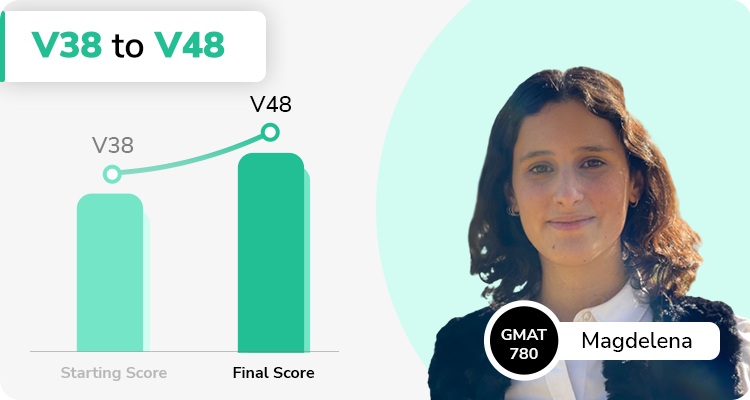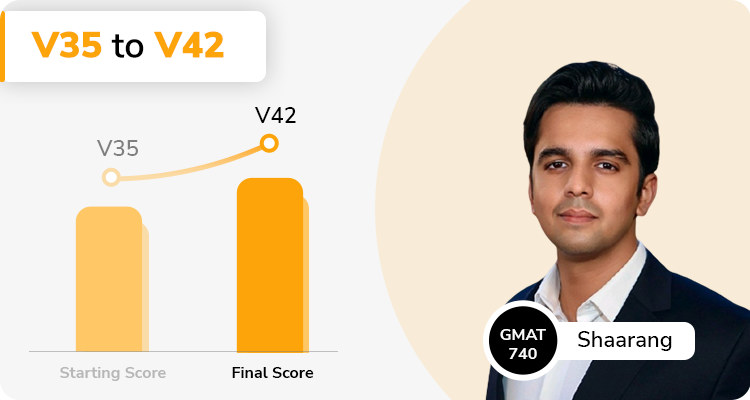This article provides a complete overview of the GMAT CR. You will learn everything you need to know about GMAT Critical Reasoning (or GMAT Logical reasoning, as it is commonly known), what it tests, the skills required to ace it, and a whole list of different GMAT CR sample questions for your practice!
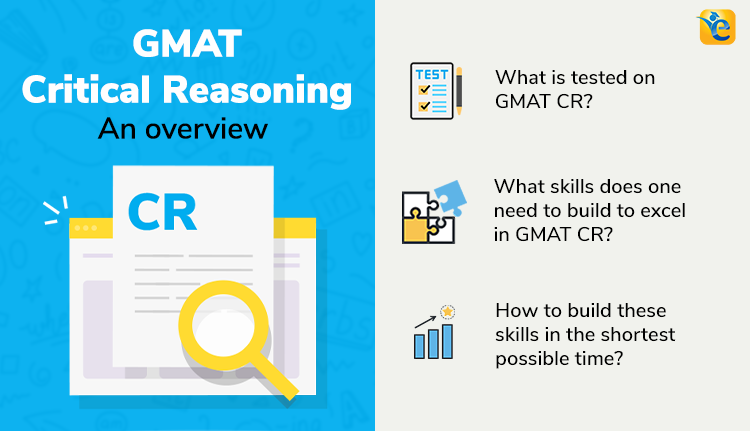
“Magic (on the GMAT) cannot happen without logic (reasoning).”
– Your friendly, neighbourhood e-GMAT Verbal Expert
GMAT Critical Reasoning (or CR, as it is ubiquitously known) is arguably the subsection of GMAT Verbal that best exemplifies the importance of logical reasoning on the test. Many of you are aware of it. Some of you love it. Some of you fear it. But if the GMAT is on your horizon, you should know how to ace it!
CR accounts for half of your verbal score. What this means is that if you have a lofty target GMAT score (665 or higher), you cannot take it lightly.
But what exactly is GMAT Critical Reasoning?
Well, GMAT CR is a test of our logical reasoning skills. As per the GMAT Official Guide, the GMAT tests our reasoning skills in three ways:
- Our understanding of how an argument is constructed
- Our skill in evaluating arguments
- Our ability to formulate or evaluate a plan of action
We have only scratched the surface here. Do you want to understand GMAT Critical Reasoning at a deeper level?
If yes, you should read on. In this article, we will discuss the basics of Critical Reasoning – what it really is, what it tests, and the various question types.
Let’s jump straight in.
1. Outline
2. Why should you listen to us?
You may be wondering why you should listen to what we have to say on all things GMAT CR.
Well, for starters, our strategies for CR have helped us deliver stellar success in the GMAT universe over the years.
We have been able to help students with low starting CR abilities excel in CR. For example, using Prethinking (our flagship CR strategy!), Jim, a current student at Booth, improved his CR score from the 39th percentile to the 94th percentile.
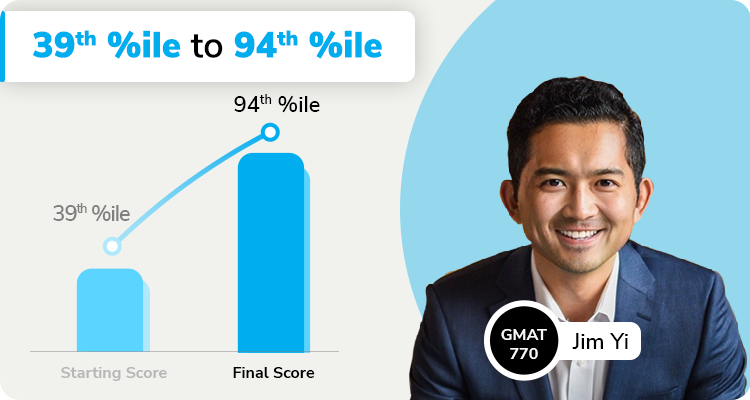
We have also been able to help students with high starting CR abilities get even better. Here are a couple of examples – Ashi improved from a 435 to an impressive 675 (V69 to V83), and Kshitija achieved a 705 by improving her verbal score from V78 to V88
In fact, since 2020, e-GMATers (our students!) have reported more 700+ scores than have students from any other test prep company. This article will give you a peek into how we have been able to do this!’
Now, let’s explore the world of CR.
3. Structure of a Critical reasoning question
Here is what a CR Question looks like (this is an example from the Official Guide):
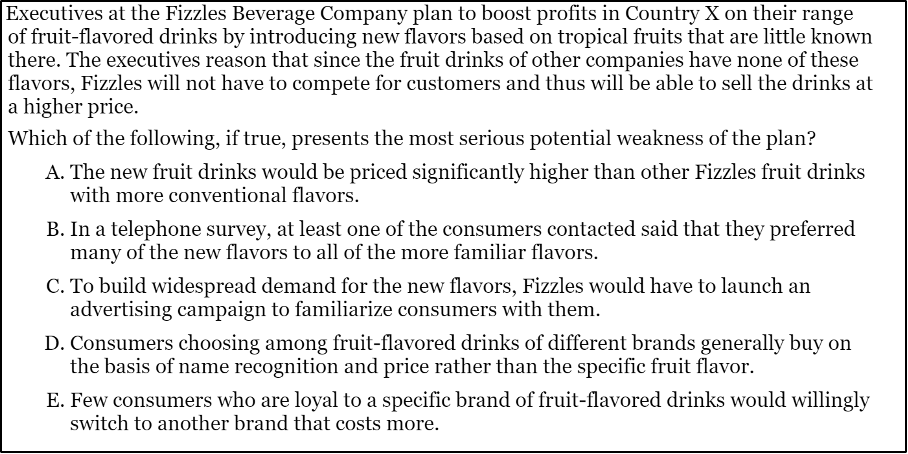
Every GMAT Critical Reasoning question consists of three components – the passage/argument, the question stem, and the answer choices.
The passage/argument, also called the Stimulus,is the piece of text given to us, which we are meant to understand and analyse. A passage simply provides information, whereas an argument has both some stated information (premises) and a defined main conclusion (the central claim made by the author of the text, which is based on some (or all) of the stated information).
Every CR question consists of three components – the passage/argument, the question stem, and the answer choices.
The question stem tells us what it is we need to do. And then, there are five answer choices.
A CR passage/argument is typically less than 100 words in length. Answer choices typically range from below 15 words to up to 35 words in length (each!). Overall, this means that a CR question typically has between 120-200 words of text.
An important point to note: As with other verbal subsections, there is only one correct answer among the five answer choices. So, if you ever get the feeling that more than one answer is surely correct, that is a red flag.
If you ever get the feeling that more than one answer is surely correct, that is a red flag.
Before you proceed further, here is a quick quiz to determine your current CR abilities and get a feel of the official CR questions tested on the GMAT. Try your hand at the same:
At this point, if you are itching to try your hand at a few more CR questions, we have got you covered. Our free trial contains a good collection of CR questions for your practice.
4. What exactly is tested on GMAT CR?
First, let us talk about what GMAT CR does not test.
The questions we see on GMAT Critical Reasoning cover various topics such as politics, art, science, literature, psychology, etc. But we are not being tested on the subject matter of these topics. The GMAT, at best, expects us to apply what is common knowledge or generally known. One need not have domain-specific knowledge to solve CR questions. Simply put, one need not be a specialist in psychology to be able to solve a CR question pertaining to the topic.
GMAT CR cover various topics such as politics, art, science, literature, psychology, etc. One need not have domain specific knowledge to solve CR questions.
Now, to understand what GMAT CR tests, first let us understand the term “reasoning”.
As per the Official Guide, any set of statements in which at least one of the statements provides logical support to another will be considered an example of “reasoning”.
Here is a quick example:
The sun is not a planet. Therefore, it must be a star.
The first statement is used as “reasoning” to support the second statement.
The above example is one of an argument, with the first statement being a premise and the second being the conclusion drawn based on the premise.
Now, a CR passage need not always contain reasoning. It may simply present information.
For example:
The sun is not a planet. Only a star or a planet can have the kind of size the sun has.
Here, both statements merely provide us with certain information. Neither statement is used as reasoning for the other. But in such a case, the question would typically ask us to arrive at a conclusion that uses the given information as reasoning.
For example: If only a star or a planet can have the kind of size the sun has, then the sun must be a planet or a star. But we are given that the sun is not a planet. Therefore, we can logically conclude or reason out that the sun must be a star.
In other words, irrespective of whether the passage text itself contains reasoning, CR questions involve an assessment of our reasoning skills.
But what exactly is assessed under the umbrella of reasoning skills?
The skills pertaining to reasoning that are tested by the GMAT Critical Reasoning are divided into four categories – Analysis, Construction, Critique, and Plan.
Here are the different CR question types that test these skills:
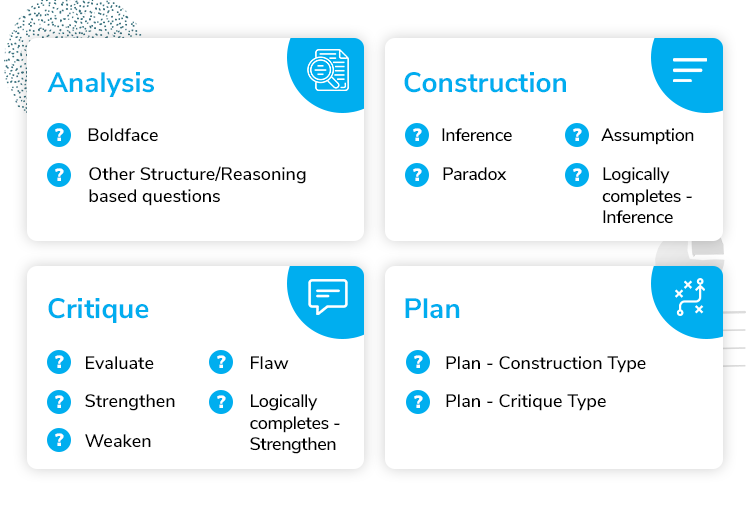
Analysis
Here, we need to analyse an argument. This involves understanding the logical reasoning/structure of the argument and the relationships between various parts of the argument.
Construction
Here, we are tested on our ability to construct solid arguments. For example – finding what can be logically concluded/inferred or finding what new information would be needed for the argument to hold true.
Critique
Here, we are tested on our ability to question the validity of arguments, identify how to strengthen or weaken arguments, identify the flaw in an argument, etc. In other words, we are critiquing a given argument.
Plan
Plan questions test our ability to construct and critique arguments pertaining to a plan of action. For example – a question may ask us to find the flaw in a plan, or maybe the underlying assumption for a plan to work. Plan questions, from a conceptual standpoint, are either construction questions or critique questions.
The skills pertaining to reasoning that are tested by the GMAT are divided into four categories – Analysis, Construction, Critique and Plan.
Now that we know what are the specific skills that get tested on the GMAT, let us now look at the various question types that are designed to assess us on these skills.
5. GMAT Critical reasoning question types
The major GMAT Critical Reasoning question types can be categorized, based on the skills being tested, as follows:
| Skills Tested: | Analysis | Construction | Critique | Plan |
| Major Question Types: | Boldface | Inference | Evaluate | Plan – Construction Type |
| Other Structure/Reasoning-based questions | Assumption | Strengthen | Plan – Critique Type | |
| Logically completes – Inference | Weaken | |||
| Paradox | Flaw | |||
| Logically completes – Strengthen |
Let us understand what these question types are, one by one.
Inference
In Inference questions, we are asked to find a statement that can be logically concluded or reasoned out as certainly true, based on the information given in the passage.
Inference Question – GMAT CR Sample Question #1
A company’s two divisions performed with remarkable consistency over the past three years: in each of those years, the pharmaceuticals division has accounted for roughly 20 percent of dollars sales and 40 percent of profits, and the chemicals division for the balance.
Regarding the past three years, which of the following can properly be inferred from the statement above?
(A) Total dollars sales for each of the company’s divisions have remained roughly constant.
(B) The pharmaceuticals division has faced stiffer competition in its markets than has the chemicals division.
(C) The chemical division has realized lower profits per dollars of sales than has the pharmaceuticals division.
(D) The product mix offered by each of the company’s divisions has remained unchanged.
(E) Highly profitable products accounted for a higher percentage of the chemicals division’s sales than of the pharmaceuticals division’s
Assumption
In Assumption questions, we are asked to identify an assumption the author of the argument must have made in order to claim something (conclusion), based on some stated information (premise(s)).
If the assumption is not true, the author cannot make that conclusion anymore (i.e., the conclusion is not valid anymore).
An important point about assumptions: The author’s conclusion depends on the assumption statement being true. If the assumption is not true, the author cannot make that conclusion anymore (i.e., the conclusion is not valid anymore).
Assumption Question – GMAT Critical Reasoning Sample Question #2
Ythex has developed a small diesel engine that produces 30 percent less particulate pollution than the engine made by its main rival, Onez, now widely used in Marania; Ythex’s engine is well-suited for use in the thriving warehousing businesses in Marania, although it costs more than the Onez engine. The Maranian government plans to ban within the next two years the use of diesel engines with more than 80 percent of current diesel engine particulate emissions in Marania, and Onez will probably not be able to retool its engine to reduce emissions to reach this target. So if the ban is passed, the Ythex engine ought to sell well in Marania after that time.
Which of the following is an assumption on which the argument above depends?
A. Marania’s warehousing and transshipment business buys more diesel engines of any size than other types of engines.
B. Ythex is likely to be able to reduce the cost of its small diesel engine within the next two years.
C. The Maranian government is generally favorable to anti-pollution regulations.
D. The government’s ban on high levels of pollution caused by diesel engines, if passed, will not be difficult to enforce.
E. The other manufacturers of small diesel engines in Marania, if there are any, have not produced an engine as popular and clean-running as Ythex’s new engine.
Evaluate
An evaluation is an assessment. Evaluating an argument means assessing the validity and strength of an argument, i.e., assessing whether the conclusion follows logically from the given premise(s).
An Evaluate question asks us to identify, from among the answer choices, what will best help in evaluating/assessing whether a certain conclusion is logically solid.
Every Evaluate answer choice, irrespective of how it is written, poses a question. These questions have two possible answers – Yes or No.
Here is an official Evaluate question for your reference.
Evaluate Question – GMAT CR Sample Question #3
Scientists have modified feed corn genetically, increasing its resistance to insect pests. Farmers who tried out the genetically modified corn last season applied less insecticide to their corn fields and still got yields comparable to those they would have gotten with ordinary corn. Ordinary corn seed, however, costs less, and what these farmers saved on insecticide rarely exceeded their extra costs for seed. Therefore, for most feed-corn farmers, switching to genetically modified seed would be unlikely to increase profits.
Which of the following would it be most useful to know in order to evaluate the argument?
(A) Whether there are insect pests that sometimes reduce feed-corn yields, but against which commonly used insecticides and the genetic modification are equally ineffective
(B) Whether the price that farmers receive for feed corn has remained steady over the past few years
(C) Whether the insecticides typically used on feed corn tend to be more expensive than insecticides typically used on other crops
(D) Whether most of the farmers who tried the genetically modified corn last season applied more insecticide than was actually necessary
(E) Whether, for most farmers who plant feed corn, it is their most profitable crop
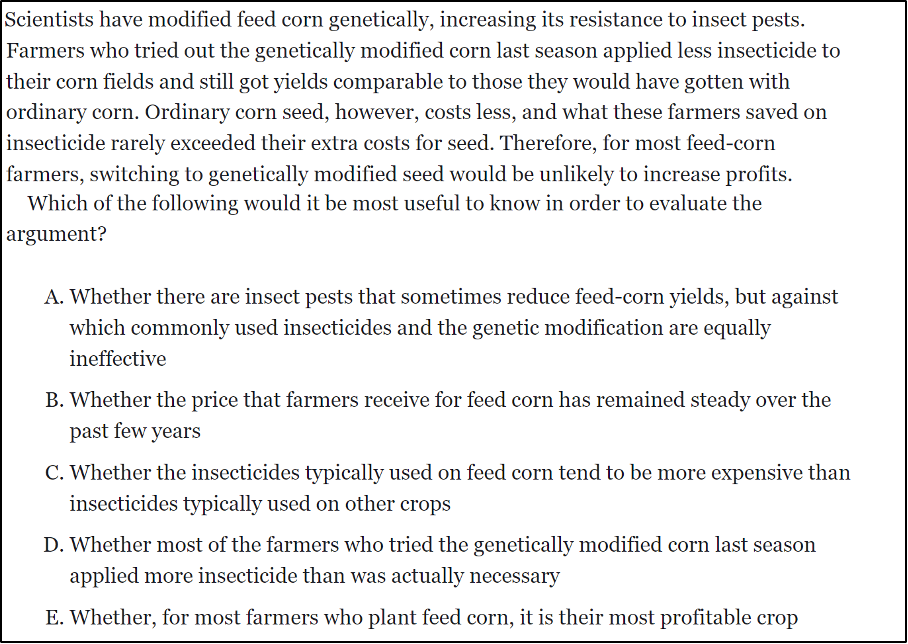
Observe how every answer choice poses a question with a simple Yes/No answer.
Important: A correct answer choice will increase our belief in the conclusion in one direction (For example: YES, to the question posed by the answer choice) and reduce our belief in the conclusion in the other direction (For example: NO, to the question posed by the answer choice).
An Evaluate question asks us to identify, from among the answer choices, what will best help in evaluating/assessing whether a certain conclusion is logically solid.
Strengthen
In Strengthen questions, we are asked to identify a statement that brings in new information which supports the conclusion of an argument. Here, we are looking for a statement that increases our belief in that conclusion.
Strengthen Question – GMAT Critical Reasoning Sample Question #4
A fossil recently discovered in Marlandia, a chain of islands, proves that a present-day reptile indigenous to Marlandia is descended from an ancient reptile species that lived on the islands millions of years ago. The finding is surprising since the ancestral species was thought to have become extinct when Marlandia was submerged in a global sea-level rise twenty-five million years ago. Based on the new discovery, many scientists have concluded that the sea-level rise in question left at least part of Marlandia unsubmerged.
Which of the following would, if true, provide the most additional support for the scientists’ conclusion?
A. Reptiles in Marlandia have adapted to many environmental changes since the sea-level rise.
B. Marlandia separated from a much larger landmass about eighty million years ago.
C. No fossils that prove the relationship between the present-day species and the ancestral species have been found anywhere other than Marlandia.
D. The present-day reptiles are able to thrive on very tiny Marlandia islands.
E. The ancestral reptiles could not have survived long at sea.
Weaken
In Weaken questions, we are asked to identify a statement that brings in new information which casts a doubt over the conclusion of an argument. Here, we are looking for a statement that reduces our belief in that conclusion.
Weaken Question – GMAT CR Sample Question #5
Advertisement: Our competitors’ computer salespeople are paid according to the value of the products they sell, so they have a financial incentive to convince you to buy the most expensive units—whether you need them or not. But here at Comput-o-Mart, our salespeople are paid a salary that is not dependent on the value of their sales, so they won’t try to tell you what to buy. That means when you buy a computer at Comput-o-Mart, you can be sure you’re not paying for computing capabilities you don’t need.
Which of the following would, if true, most weaken the advertisement’s reasoning?
A. Some less-expensive computers actually have greater computing power than more expensive ones.
B. Salespeople who have a financial incentive to make sales generally provide more attentive service than do other salespeople.
C. Extended warranties purchased for less-expensive computers can cost nearly as much as the purchase price of the computer.
D. Comput-o-Mart is open only limited hours, which makes it more difficult for many shoppers to buy computers there than at other retail stores.
E. Comput-o-Mart does not sell any computers that support only basic computing.
Flaw
These questions ask us to find the statement among the answer choices that highlights a logical flaw/problem in an argument’s reasoning.
Flaw Question – GMAT Critical Reasoning Sample Question #6
The contingency-fee system, which allows lawyers and their clients to agree that the lawyer will be paid only in the event of success, does not increase the number of medical malpractice lawsuits brought against doctors. As attorneys must cover the costs for their time and research, they want to be assured that any medical malpractice case they accept on a contingency-fee basis has substantial merit. Consequently, attorneys turn away many people who come to see them, for lack of a good case.
The argument above is most vulnerable to criticism on the grounds that it fails to
A. specify the criteria attorneys use to judge the merits of a medical malpractice case
B. consider whether, in the absence of a contingency-fee option, even people with meritorious cases are much less likely to initiate litigation if they believe they might incur large legal fees
C. note whether, in successful medical malpractice lawsuits, the average monetary award after legal costs have been deducted is less under contingency-fee arrangements than otherwise
D. consider the effect of the contingency-fee system on the number of lawsuits sought for reasons other than medical malpractice
E. acknowledge the rising cost of medical malpractice insurance
Logically Completes (Fill in the Blanks)
In these questions, the passage/argument is incomplete: it contains a blank. The question will ask us to fill in the blank, i.e., logically complete the blank portion of the passage/argument.
Logically Completes Question – GMAT CR Sample Question #7
Which of the following best completes the passage below?
When the products of several competing suppliers are perceived by consumers to be essentially the same, classical economics predicts that price competition will reduce prices to the same minimal levels and all suppliers’ profits to the same minimal levels. Therefore, if classical economics is true, and given suppliers’ desire to make as much profit as possible, it should be expected that ____________
(A) in a crowded market widely differing prices will be charged for products that are essentially the same as each other
(B) as a market becomes less crowded as suppliers leave, the profits of the remaining suppliers will tend to decrease
(C) each supplier in a crowded market will try to convince consumers that its product differs significantly from its competitors’ products.
(D) when consumers are unable to distinguish the products in a crowded market, consumers will judge that the higher-priced products are of higher quality
(E) suppliers in crowded markets will have more incentive to reduce prices and thus increase sales than to introduce innovations that would distinguish their product from their competitors’ products
Now, there are typically two types of questions here.
Logically Completes – Inference
Here, the given statements are merely information. The blank we need to fill with the correct answer choice is what can be logically concluded or reasoned out based on the given statements. Hence, this is practically an Inference question.
Logically Completes – Strengthen
Here, the given statements include a stated main conclusion. The blank we need to fill with the correct answer choice is some additional premise that supports or strengthens the conclusion being made. Hence, this is practically a Strengthen question.
Paradox
A paradoxical situation is one that seems to not make logical sense, and therefore seems contradictory to what was logically expected.
In this question, we are tasked with finding an explanation that can “resolve the paradox”. Simply put, our job is to find a logical explanation for the paradoxical situation.
Paradox Question – GMAT Critical Reasoning Sample Question #8
When new laws imposing strict penalties for misleading corporate disclosures were passed, they were hailed as initiating an era of corporate openness. As an additional benefit, given the increased amount and accuracy of information disclosed under the new laws, it was assumed that analysts’ predictions of corporate performance would become more accurate. Since the passage of the laws, however, the number of inaccurate analysts’ predictions has not in fact decreased.
Which of the following would, if true, best explain the discrepancy outlined above?
A) The new laws’ definition of “misleading information” can be interpreted in more than one way.
B) The new laws require corporations in all industries to release information at specific times of the year.
C) Even before the new laws were passed, the information most corporations released was true.
D) Analysts base their predictions on information they gather from many sources, not just corporate disclosures.
E) The more pieces of information corporations release, the more difficult it becomes for anyone to organize them in a manageable way.
Boldface
In this question type, we are given an argument (premises + main conclusion). Two of the statements in the argument are highlighted in bold. We are asked to identify the functions played by the two boldfaced statements in the argument.
Here is a quick official example of what a Boldface question looks like.
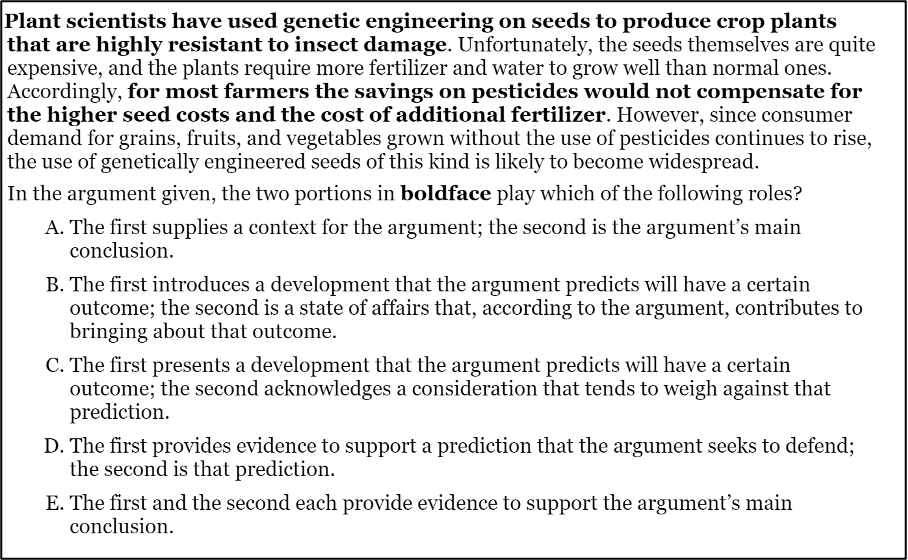
Boldface – GMAT CR Sample Question #9
Most of Western music since the Renaissance has been based on a seven-note scale known as the diatonic scale, but when did the scale originate? A fragment of a bone flute excavated at a Neanderthal campsite has four holes, which are spaced in exactly the right way for playing the third through sixth notes of a diatonic scale. The entire flute must surely have had more holes, and the flute was made from a bone that was long enough for these additional holes to have allowed a complete diatonic scale to be played. Therefore, the Neanderthals who made the flute probably used a diatonic musical scale.
In the argument given, the two portions in boldface play which of the following roles?
A. The first is presented as evidence that is confirmed by data presented elsewhere in the argument given; the second states a hypothesis that this evidence is used to undermine.
B. The first is an opinion, for which no supporting evidence is presented in the argument given, that is used to support the main conclusion of the argument; the second is that main conclusion.
C. The first describes a discovery as undermining the position against which the argument is directed; the second states the main conclusion of the argument.
D. The first is a preliminary conclusion drawn on the basis of evidence presented elsewhere in the argument given; the second is the main conclusion that this preliminary conclusion supports.
E. The first provides evidence to support the main conclusion of the argument; the second states a subsidiary conclusion that is drawn in order to support the main conclusion stated earlier in the argument.
Other Structure/Reasoning-Based Questions
There are some other miscellaneous question types that are all about understanding the line of reasoning or understanding the logical structure given in the passage/argument. These are comparatively rarer on the GMAT, but here are a few for your reference:
Reasoning – GMAT Critical Reasoning Sample Question #10
Networks of blood vessels in bats’ wings serve only to disperse heat generated in flight. This heat is generated only because bats flap their wings. Thus paleontologists’ recent discovery that the winged dinosaur Sandactylus had similar networks of blood vessels in the skin of its wings provides evidence for the hypothesis that Sandactylus flew by flapping its wings, not just by gliding.
In the passage, the author develops the argument by
(A) forming the hypothesis that best explains several apparently conflicting pieces of evidence
(B) reinterpreting evidence that had been used to support an earlier theory
(C) using an analogy with a known phenomenon to draw a conclusion about an unknown phenomenon
(D) speculating about how structures observed in present-day creatures might have developed from similar structures in creatures now extinct
(E) pointing out differences in the physiological demands that flight makes on large, as opposed to small, creatures
Analogous Reasoning/Parallel Reasoning
In this question, the given passage has a certain type of reasoning structure. We have to select, from the answer choices, a similar reasoning structure in a completely different scenario (not related to the passage!). Sounds interesting? Here is an example of this question type.
Identifying the logical structure
In this question, the given passage usually presents a conversation between two or more individuals. We need to analyse all arguments, understand their logical structure, and identify how a speaker supports or counters another’s view.
Here is an example for this question type.
Plan Questions
As highlighted earlier, plan-based questions, at a concept level, are either construction questions or critique questions.
Plan-based questions, at a concept level, are either construction questions or critique questions.
Here, there is a given plan of action discussed, which has a specific goal. Here are some possible question sub-types:
Construction
- What can be logically concluded about the plan to do X? (Inference)
- For the plan Y to succeed, what must be true? (Assumption)
- Etc.
Critique
- Which of the following statements most strongly supports the notion that the plan Y will succeed in doing Z? (Strengthen)
- Which of the following statements helps us most in evaluating if the plan Y will be successful? (Evaluate)
- The plan to do X is most vulnerable to which of the following criticisms? (Flaw)
- Etc.
Here is an example of a plan-type CR question for your reference.
At this point, you may be wondering – which of these question types are most commonly seen on the GMAT?
Assumption, Strengthen, and Weaken are arguably the most common question types on the test. Of course, this does not necessarily mean that you will get mostly these question types. Every individual’s experience on the test is unique (After all, the GMAT is an adaptive test!).
GMAT Critical Reasoning Practice Questions- List
Here is a list of all the CR practice questions discussed in this article, for your quick reference:
- Practice Question 1: Inference
- Practice Question 2: Assumption
- Practice Question 3: Evaluate
- Practice Question 4: Strengthen
- Practice Question 5: Weaken
- Practice Question 6: Flaw
- Practice Question 7: Logically completes
- Practice Question 8: Paradox
- Practice Question 9: Boldface
- Practice Question 10: Reasoning
6. Your Next Steps | GMAT Critical Reasoning
There you go!
I hope this article was useful in getting you acquainted with GMAT Critical Reasoning. In subsequent articles, we will explore the world of GMAT CR further – what skills does one need to build to ace CR, how to prepare, etc. Make sure you catch those articles too!
If you would like to try attempting some CR questions to get a feel for CR, you can check out our free trial.
Through these files, you will get introduced to Prethinking, the CR strategy that has played a part in the success of thousands of students. If you want to explore Prethinking further, you may want to check out our free webinar on Prethinking for CR Assumption questions.


